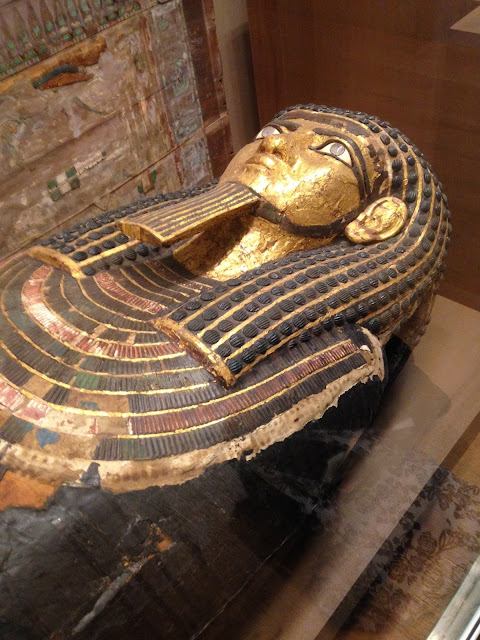Day 387 - Milanese painting
December 2, 2024
Gallery 610 contains five paintings and a marble relief created by Lombard artists, none of whom I'd heard of before, including Vincenzo Foppa, Andrea Solario, Girolamo Romanino, Marco d’Oggiono, and Giampetrino. The introductory wall placard discusses these artists’ “search for truth” - their close observation of nature and the sharp contrast in their works between the beautiful and the ugly- but I’m not sure I could draw much of a distinction between these painters and their counterparts in other regions of Italy.
Two paintings, both rather small in format (perhaps 22 inches wide and 26 inches high), capture my attention. One is an oil-on-wood panel showing Salome with the head of Saint John the Baptist painted by Solario around 1508. As many times as I’ve seen this subject depicted, the composition here strikes me as highly original. Its most unusual element is the disembodied right forearm of the executioner, which emerges from the dark background. In his hand, the henchman suspends the saint's severed head over a metal basin that Salome holds delicately. Seen from the waist up, she is sumptuously dressed and bejeweled (I like her blue headband!) ; her face appears as expressionless as that of the dead saint. The scene is lit from the left, and Solario has captured the way the light strikes the basin. I wonder who commissioned the painting: The size of the work suggests that it was made for private devotion, but there's something so sensuous about Salome that I'm not sure the painting would inspire religious sentiment.
The second painting, "Girl with Cherries," made around 1491-1495, is attributed to d'Oggiorno, a close associate of Leonardo da Vinci. The young woman portrayed in the painting certainly wears the same enigmatic smile we associate with many of Leonardo's female figures. She wears a crown of ivy, which the wall sign notes symbolizes marital fidelity. (Did cherries also symbolize virginity, I wonder?
Looking at both pictures, I deduce that strawberry blond ringlets were very fashionable in Milan during this period!
later
Actually, asI was looking at a repro of "La Primavera" and thinking about "The Birth of Venus," I realized that strawberry blond ringlets/waves were popular all over Northern Italy in the late 1400s!





Comments
Post a Comment